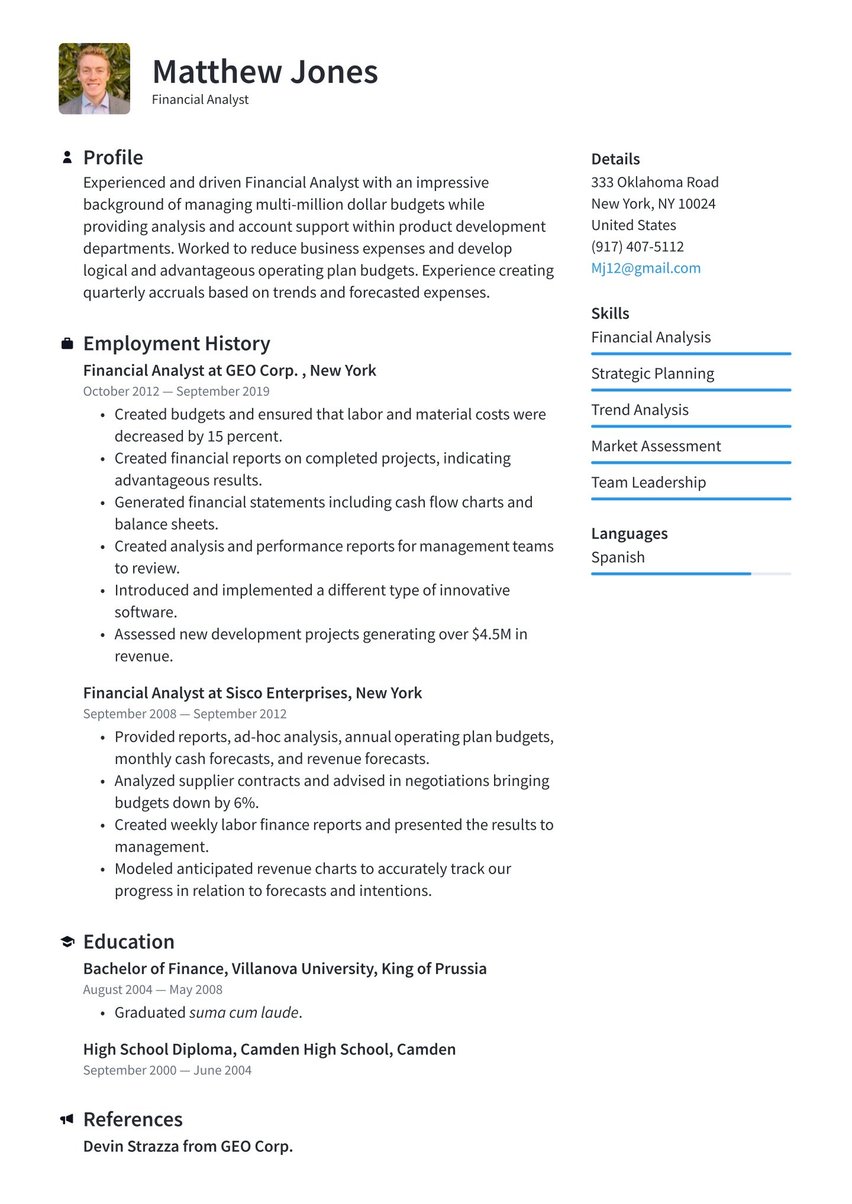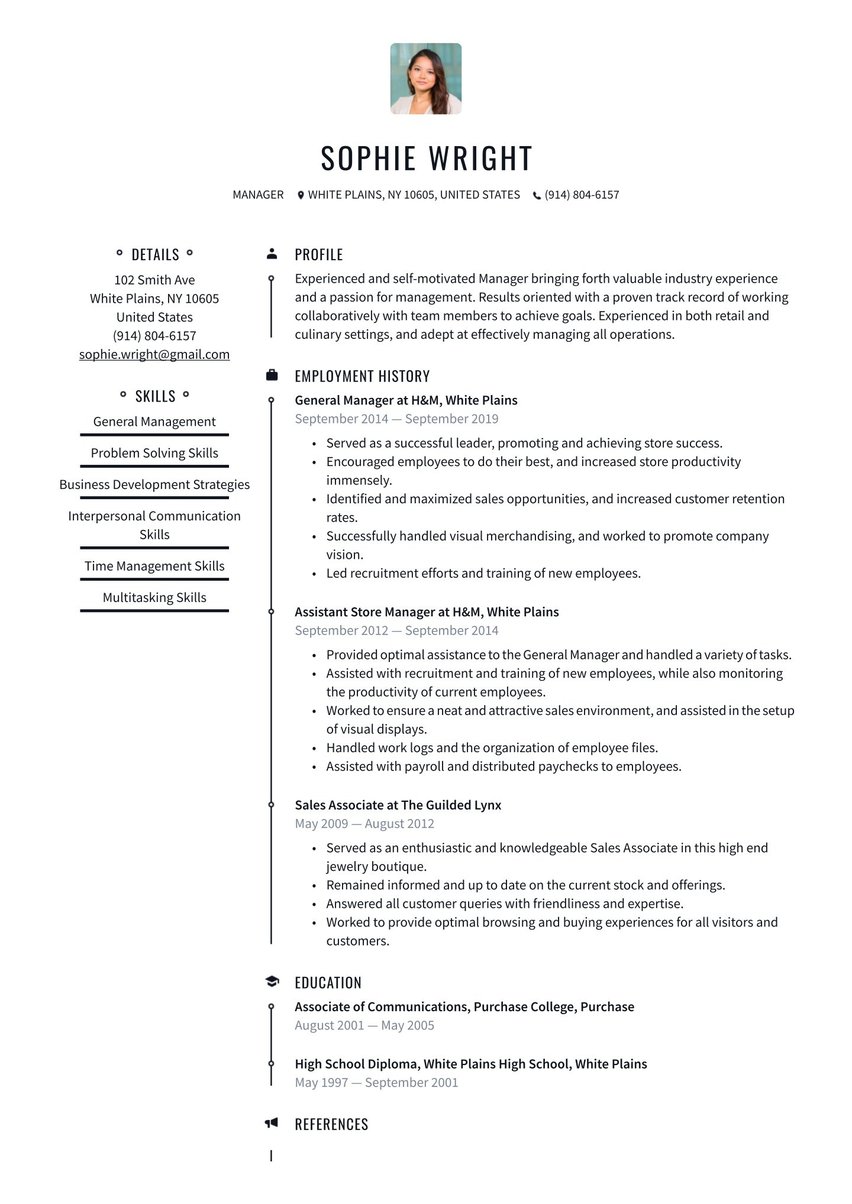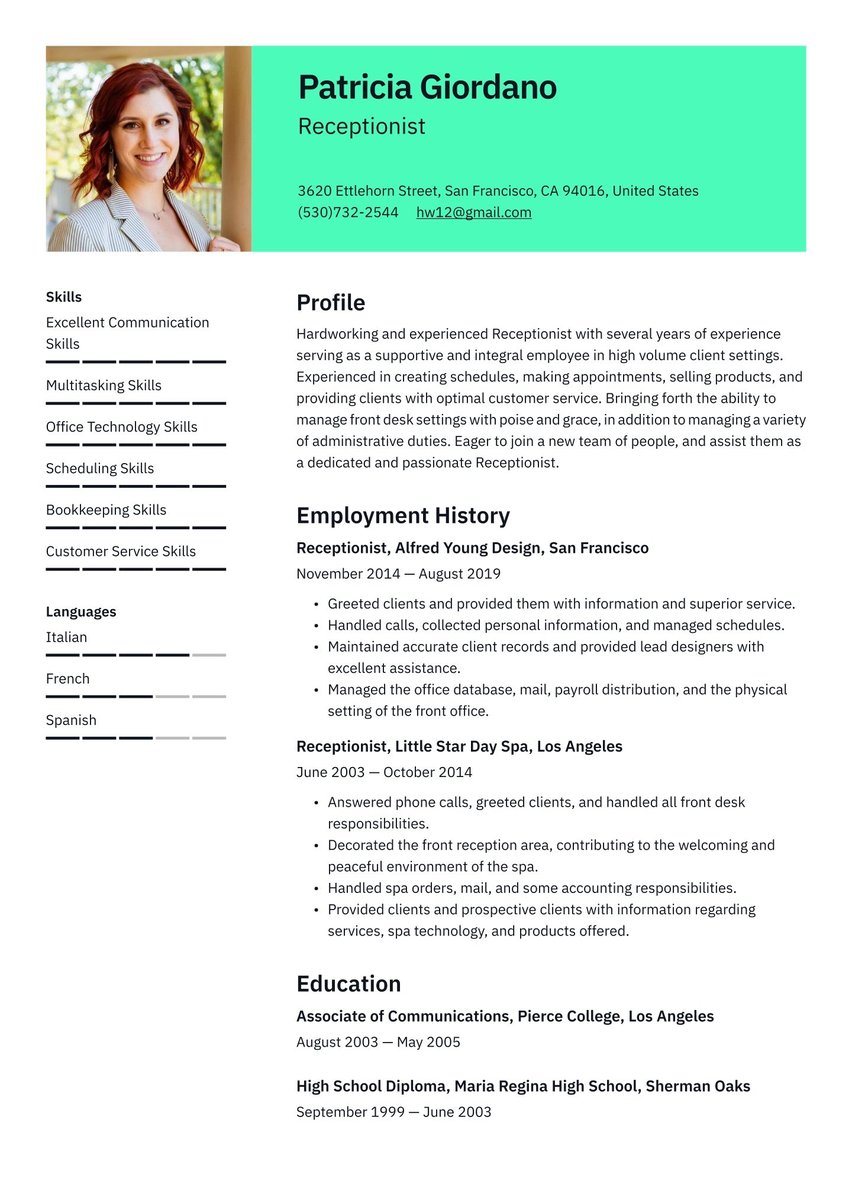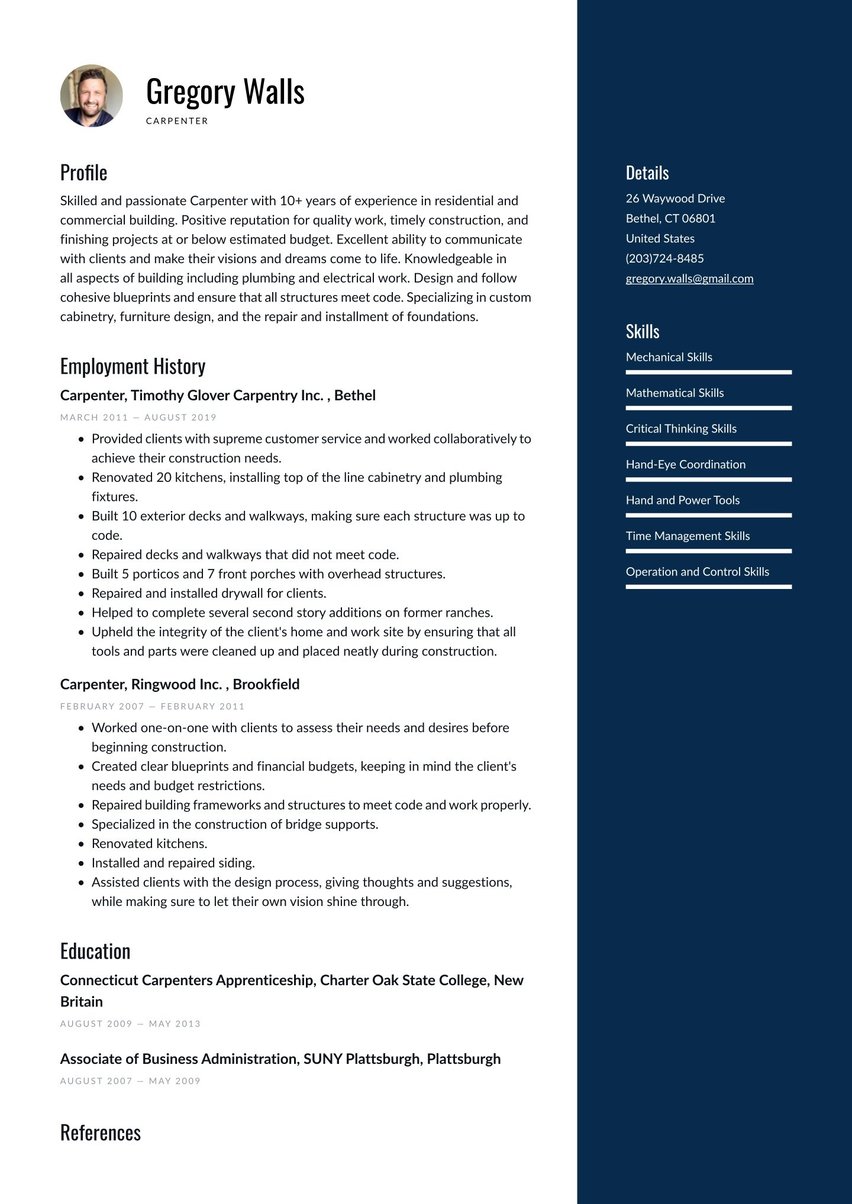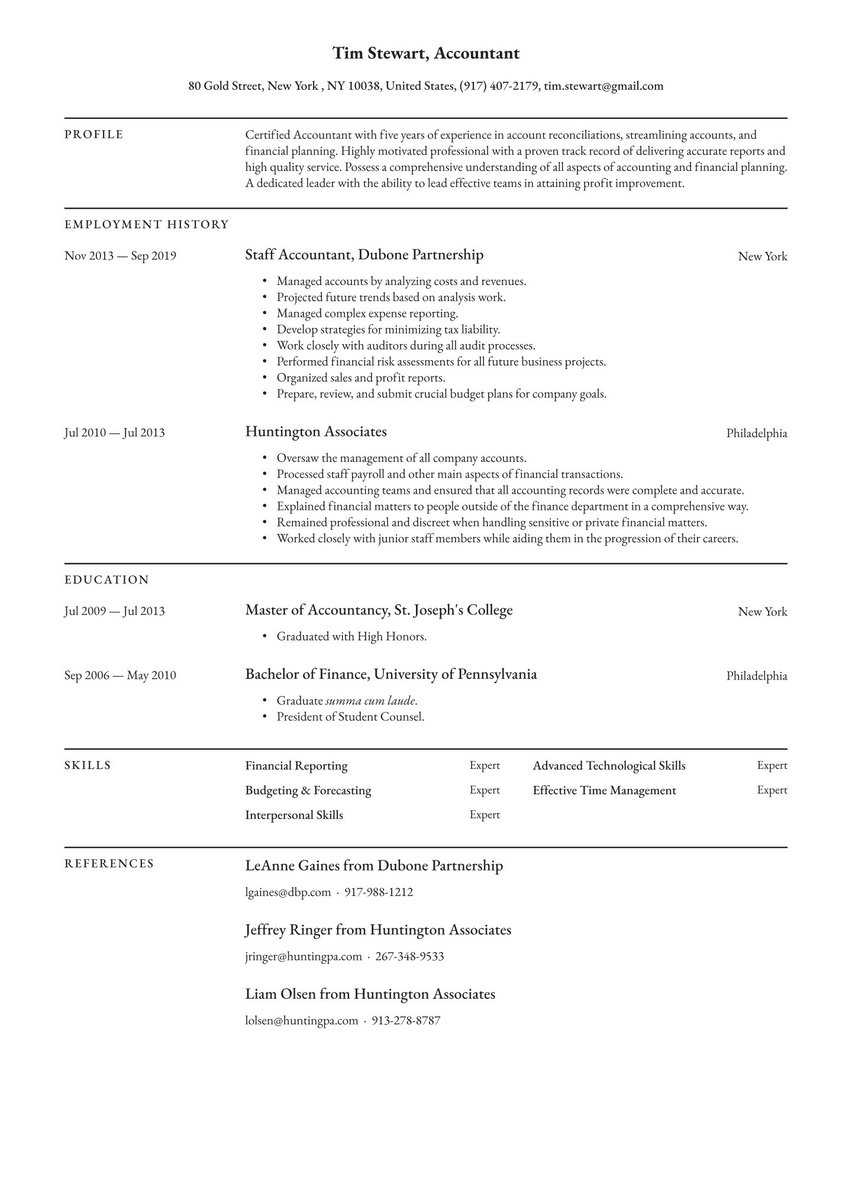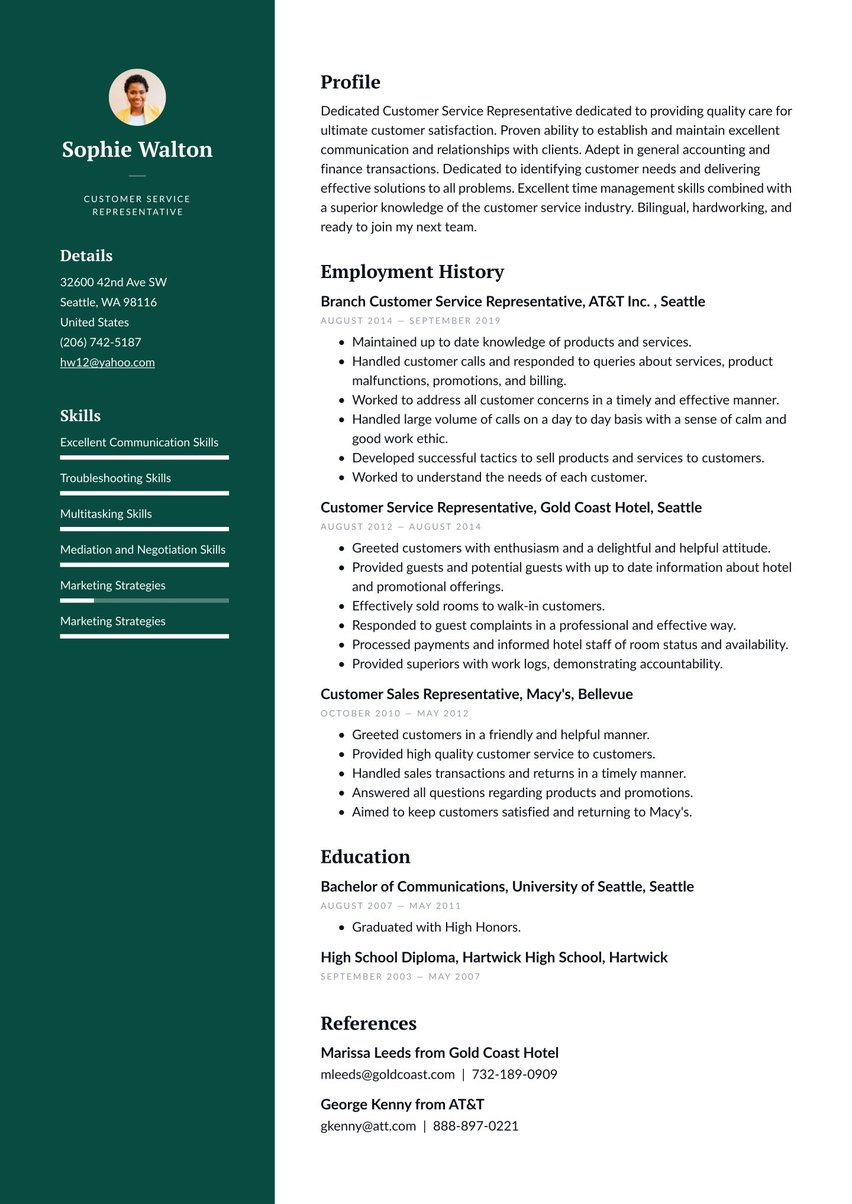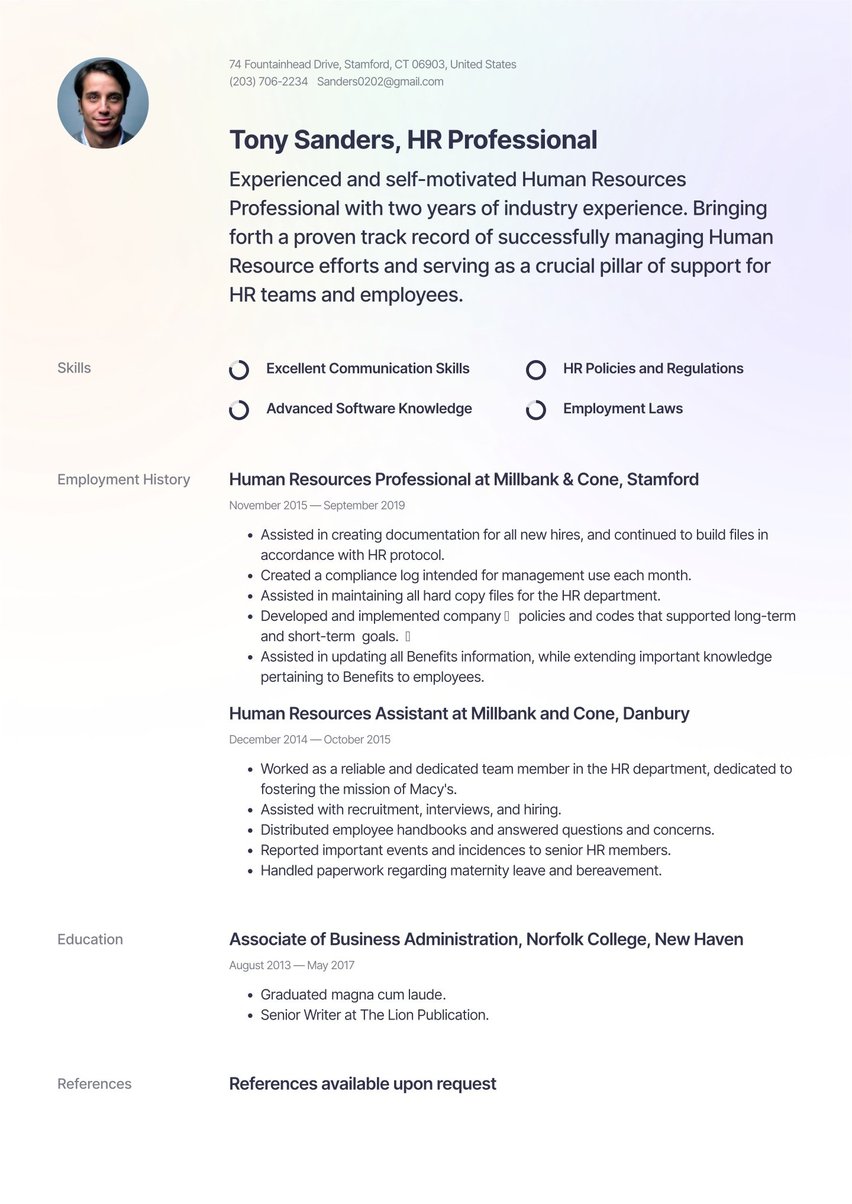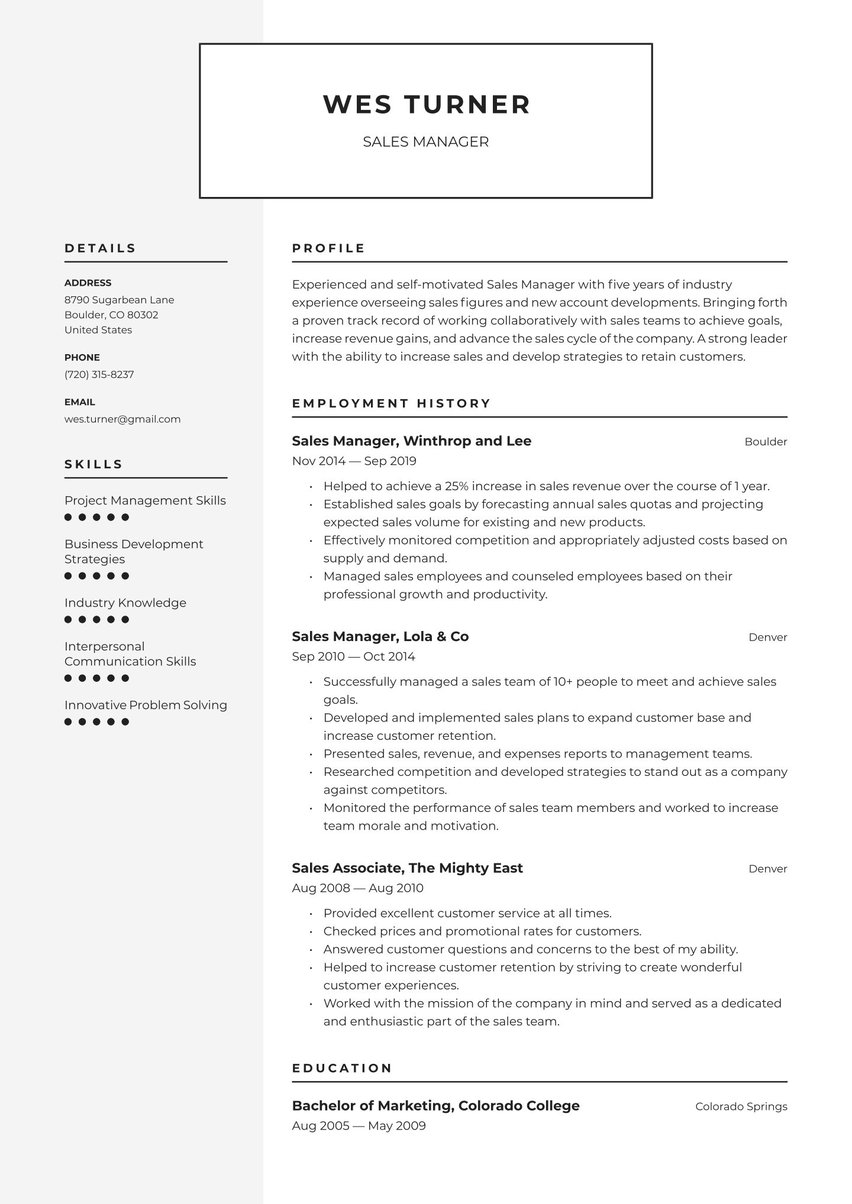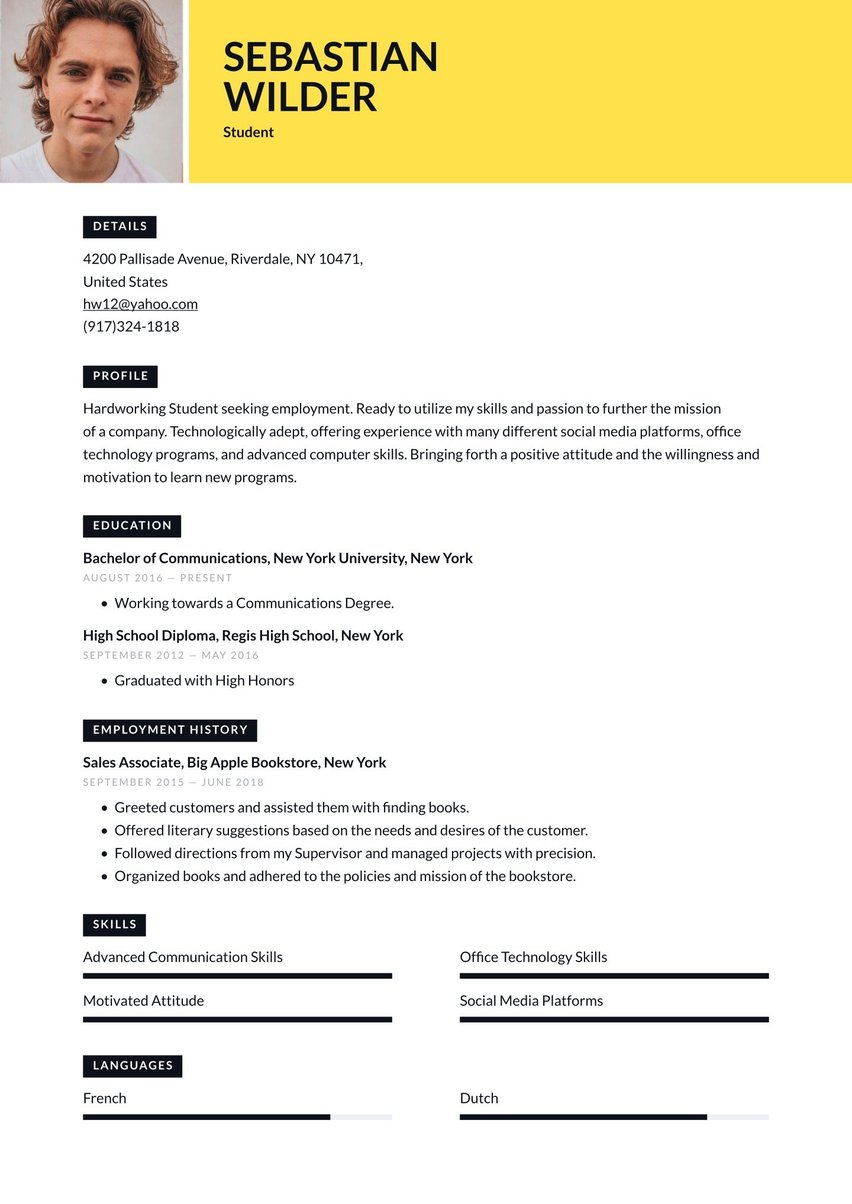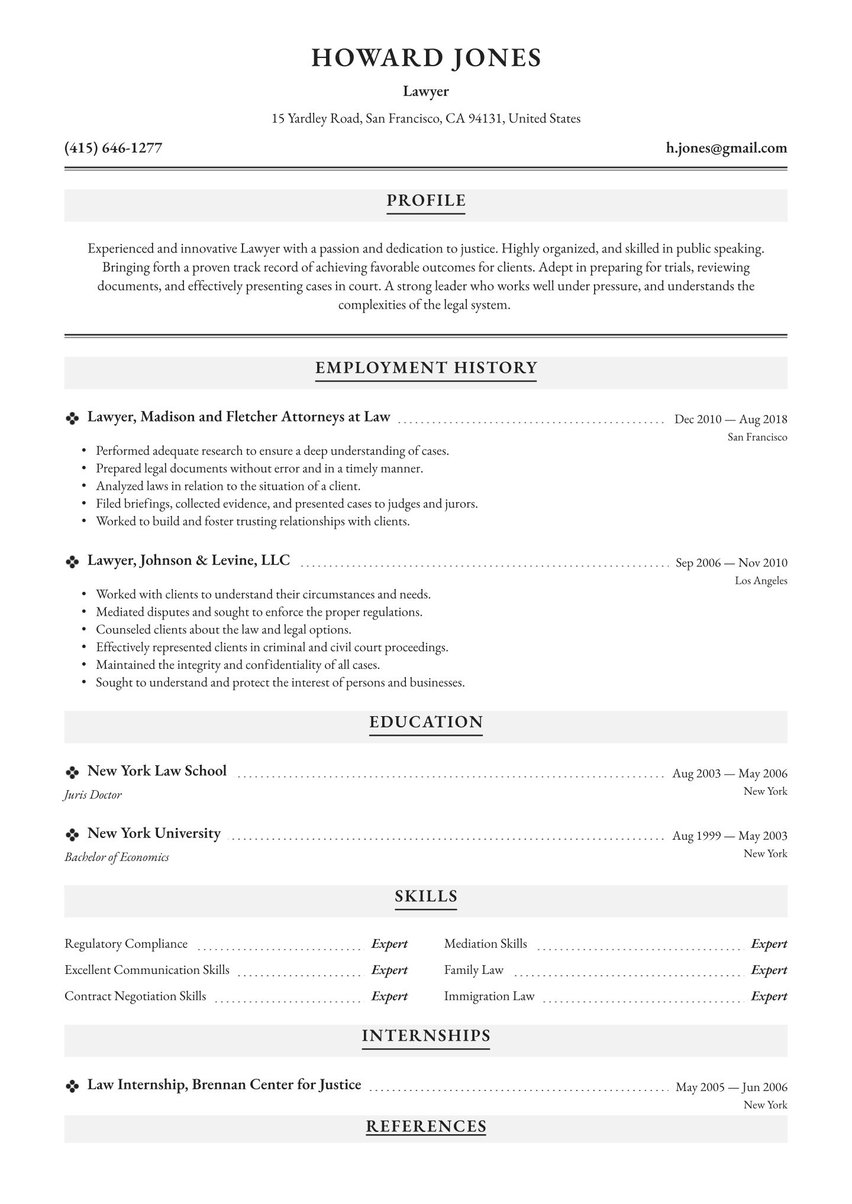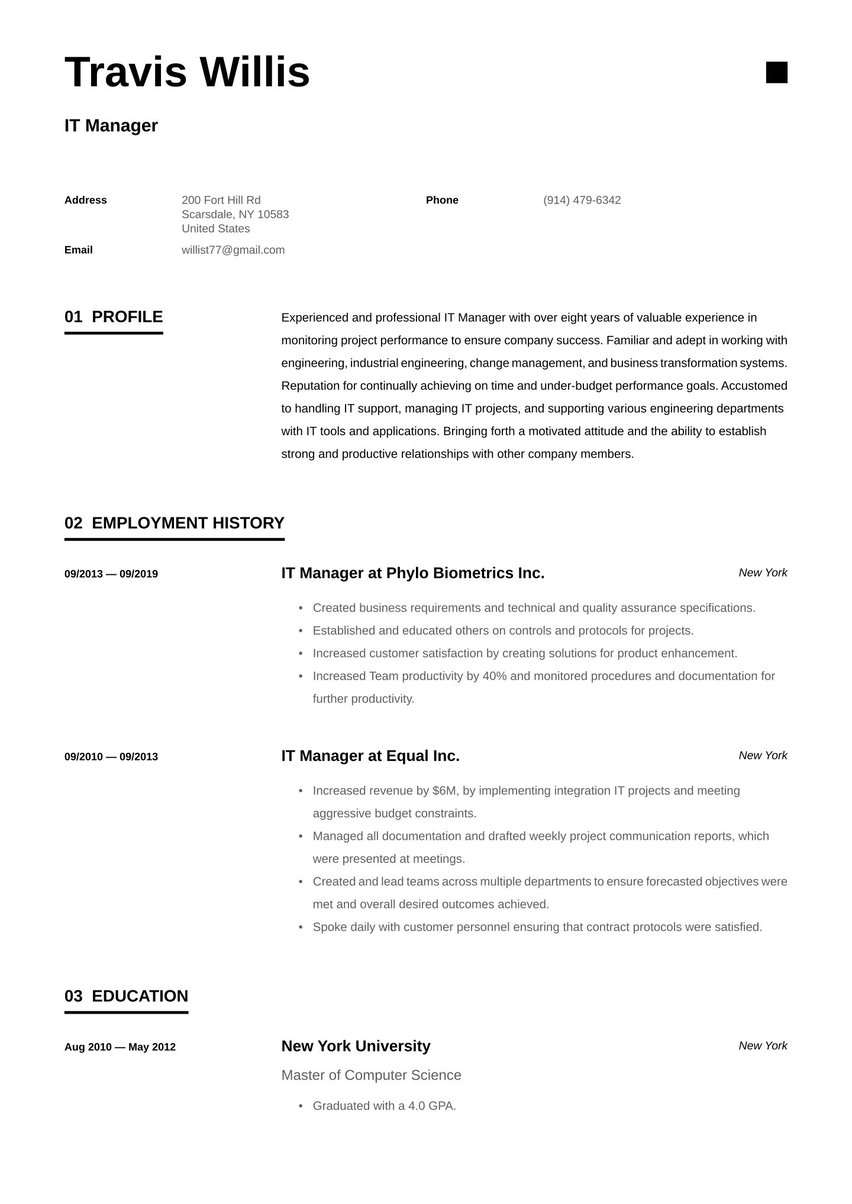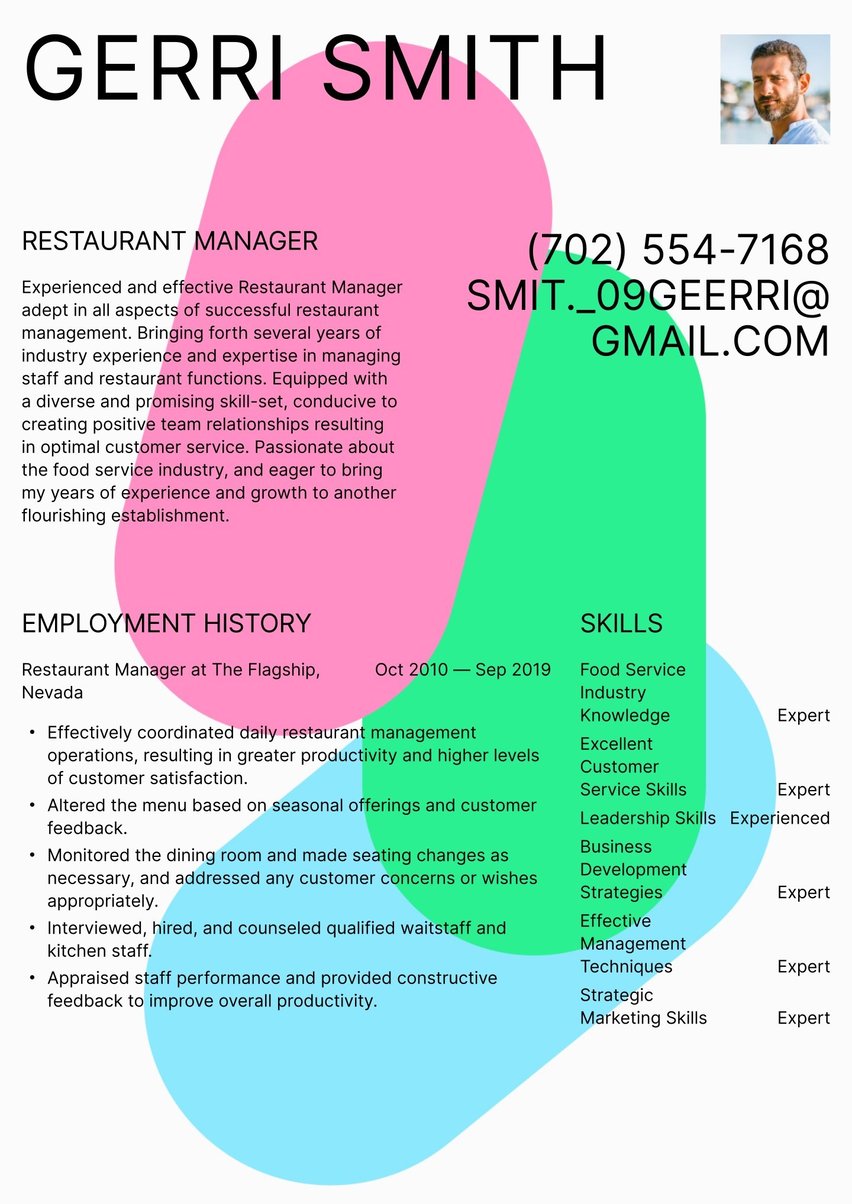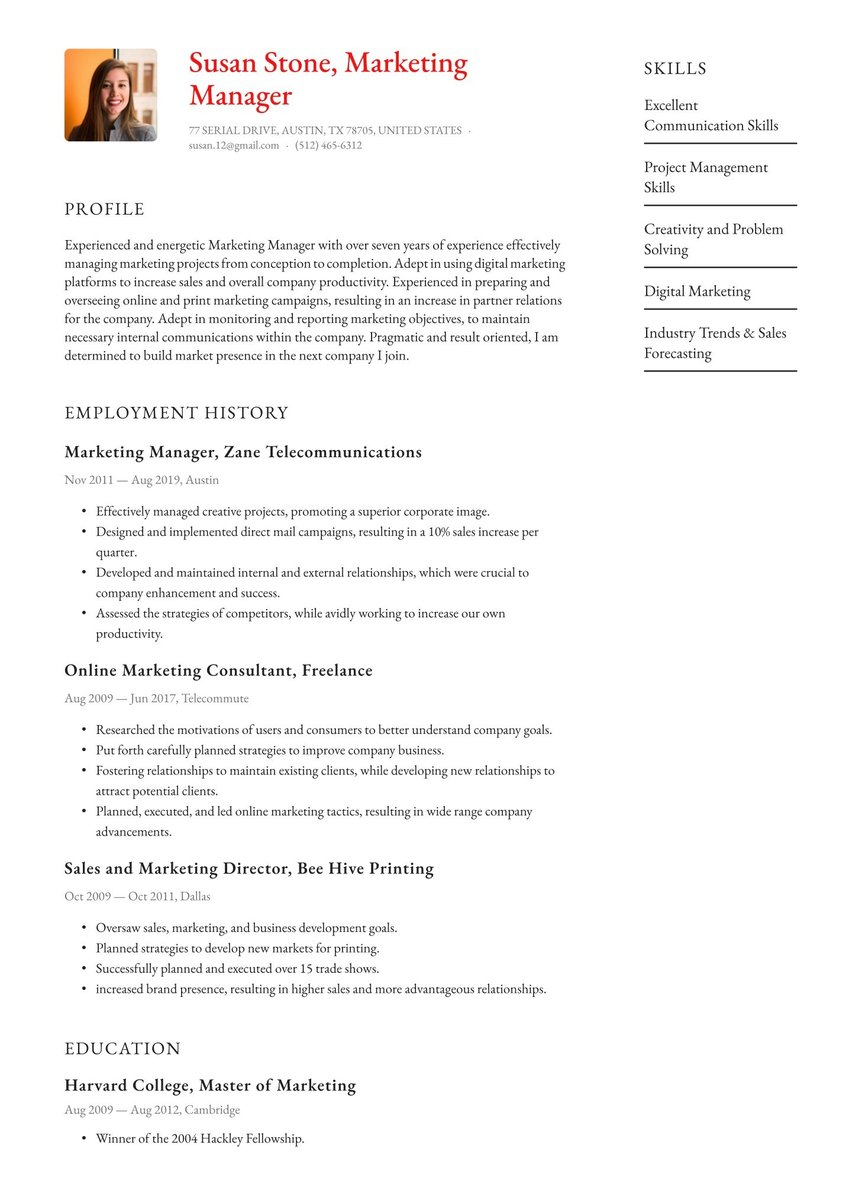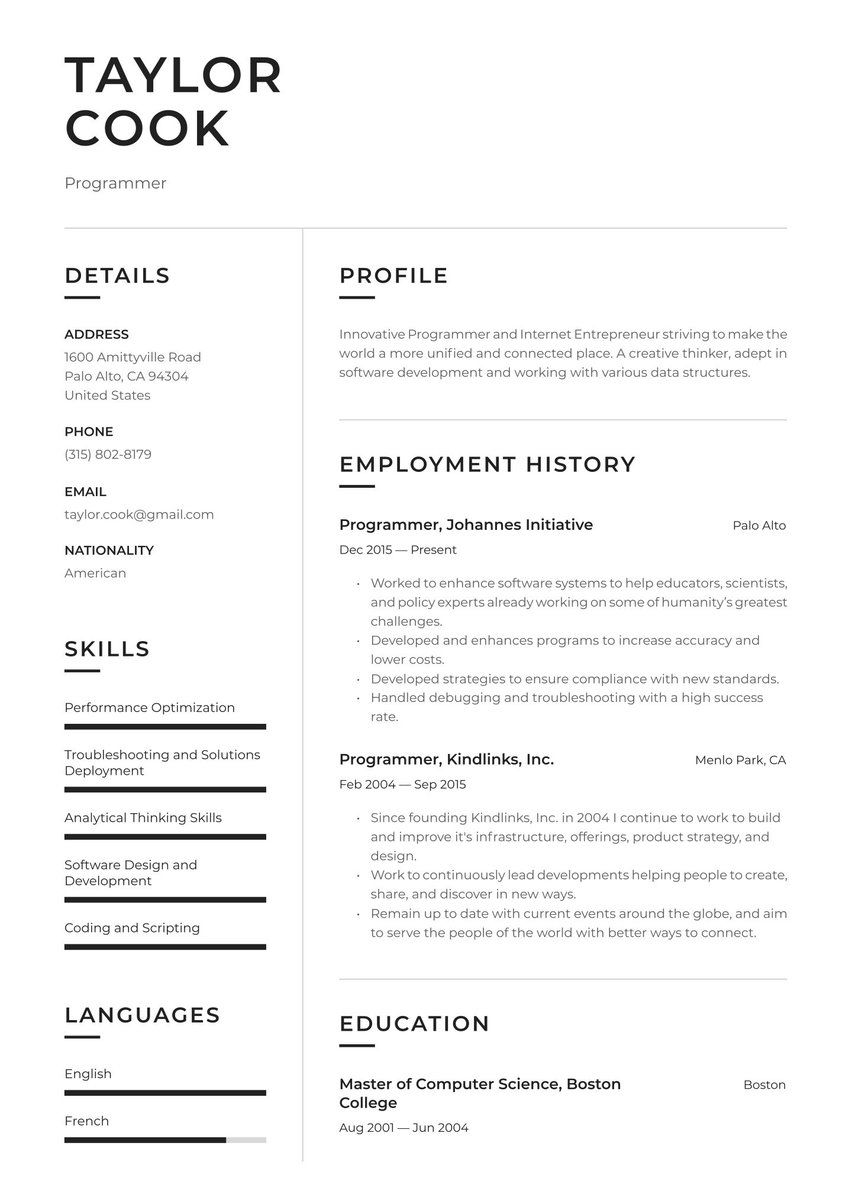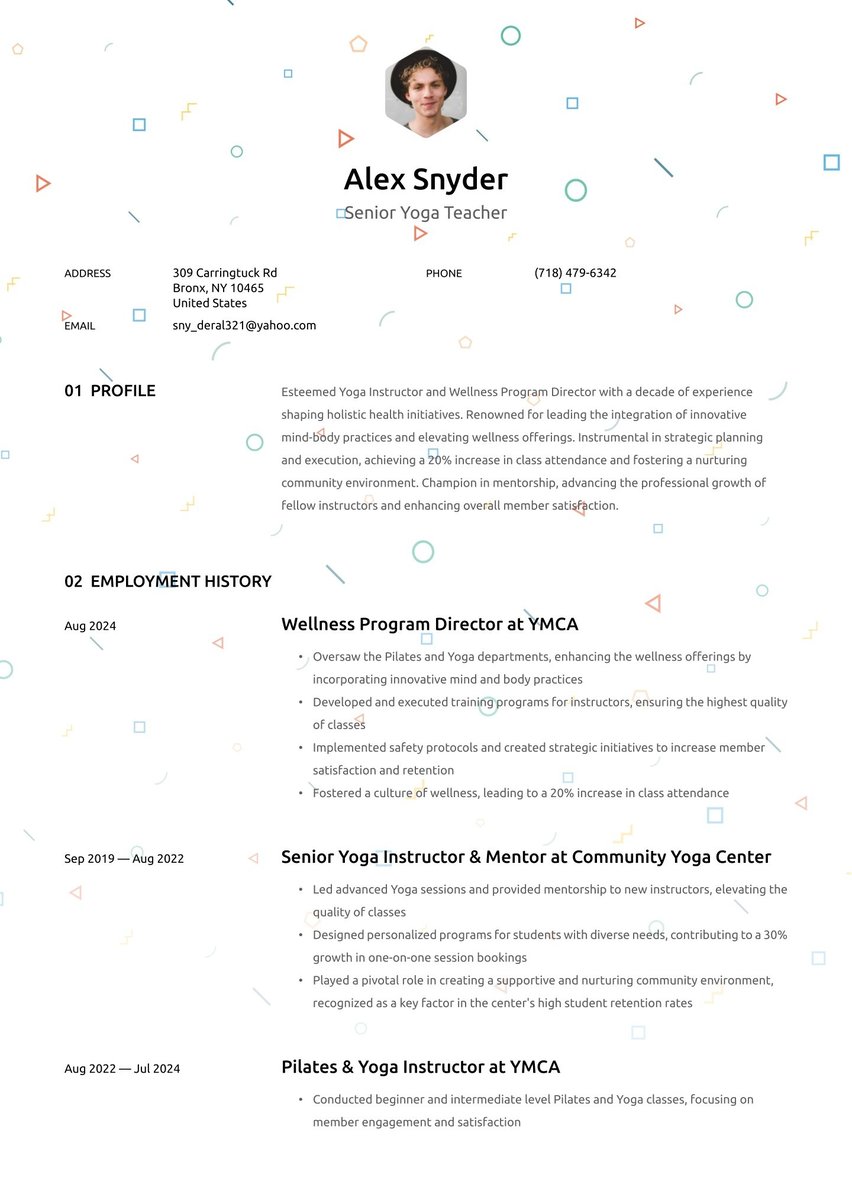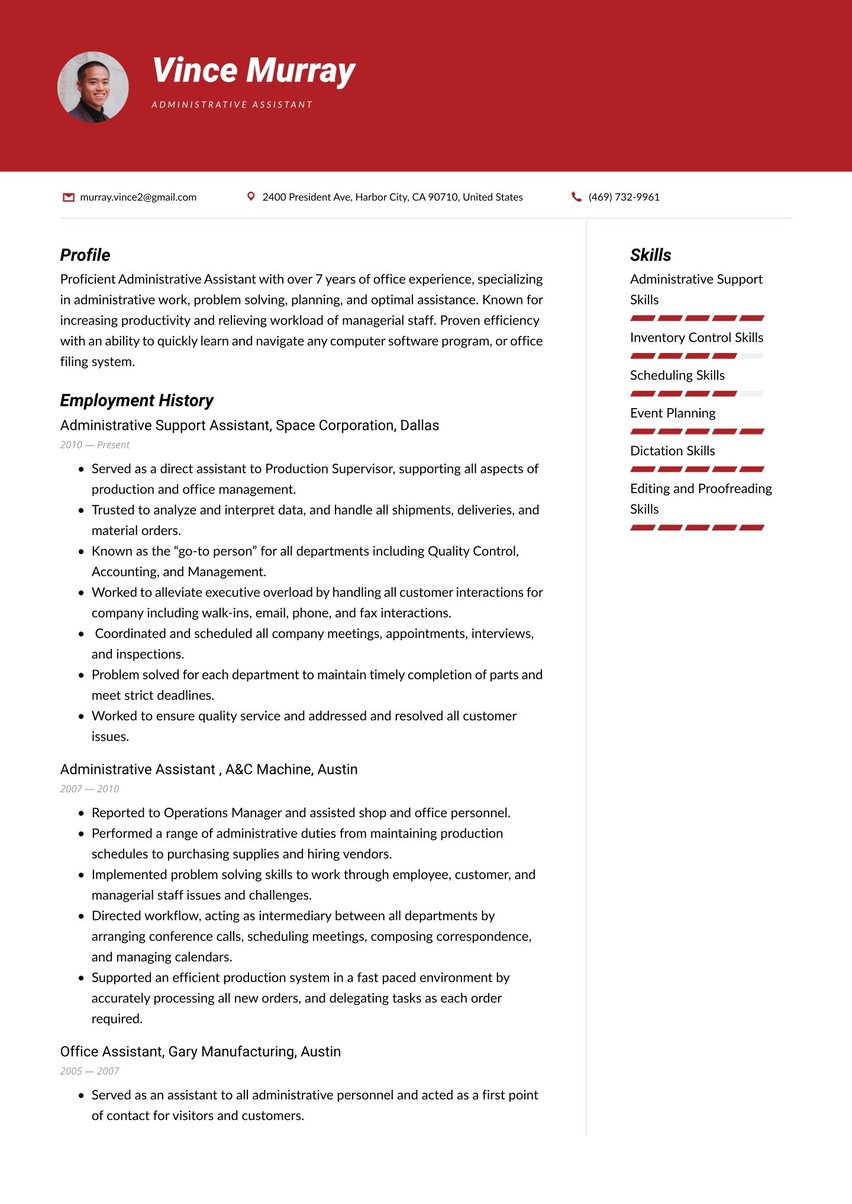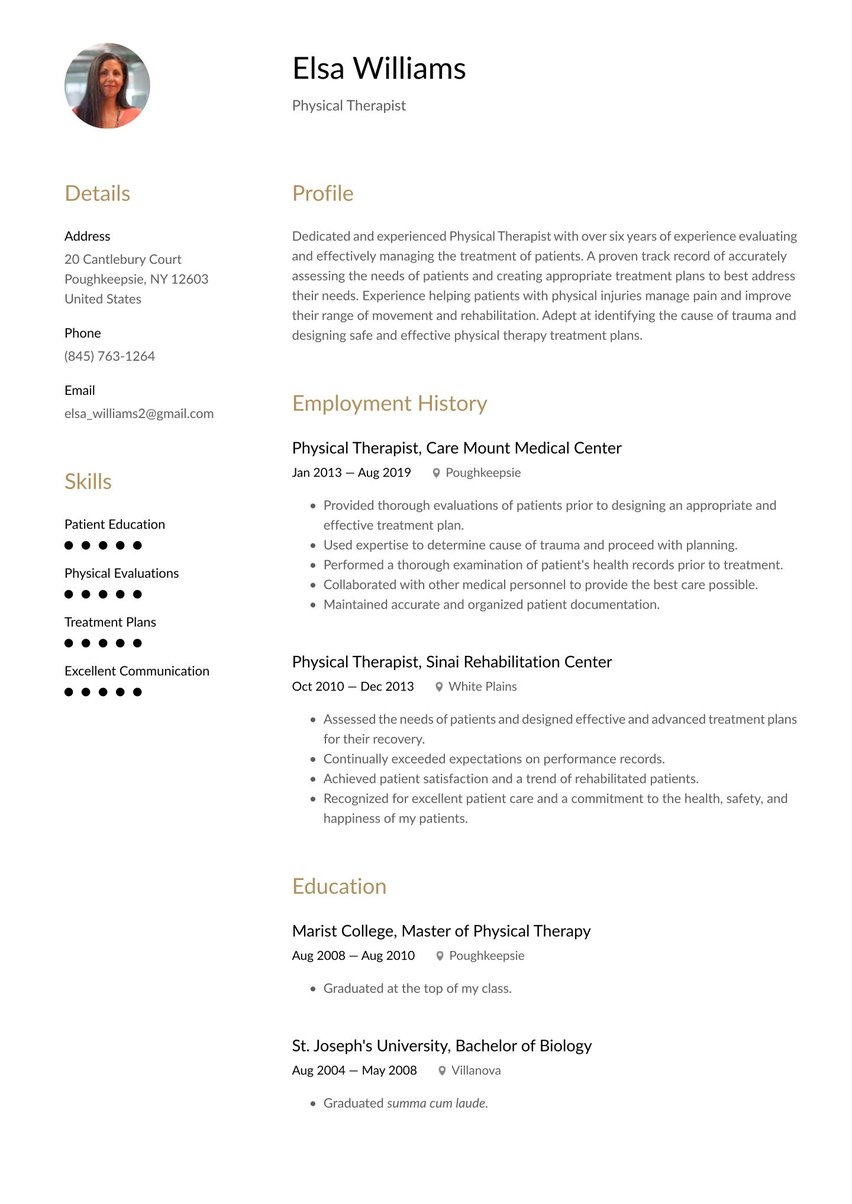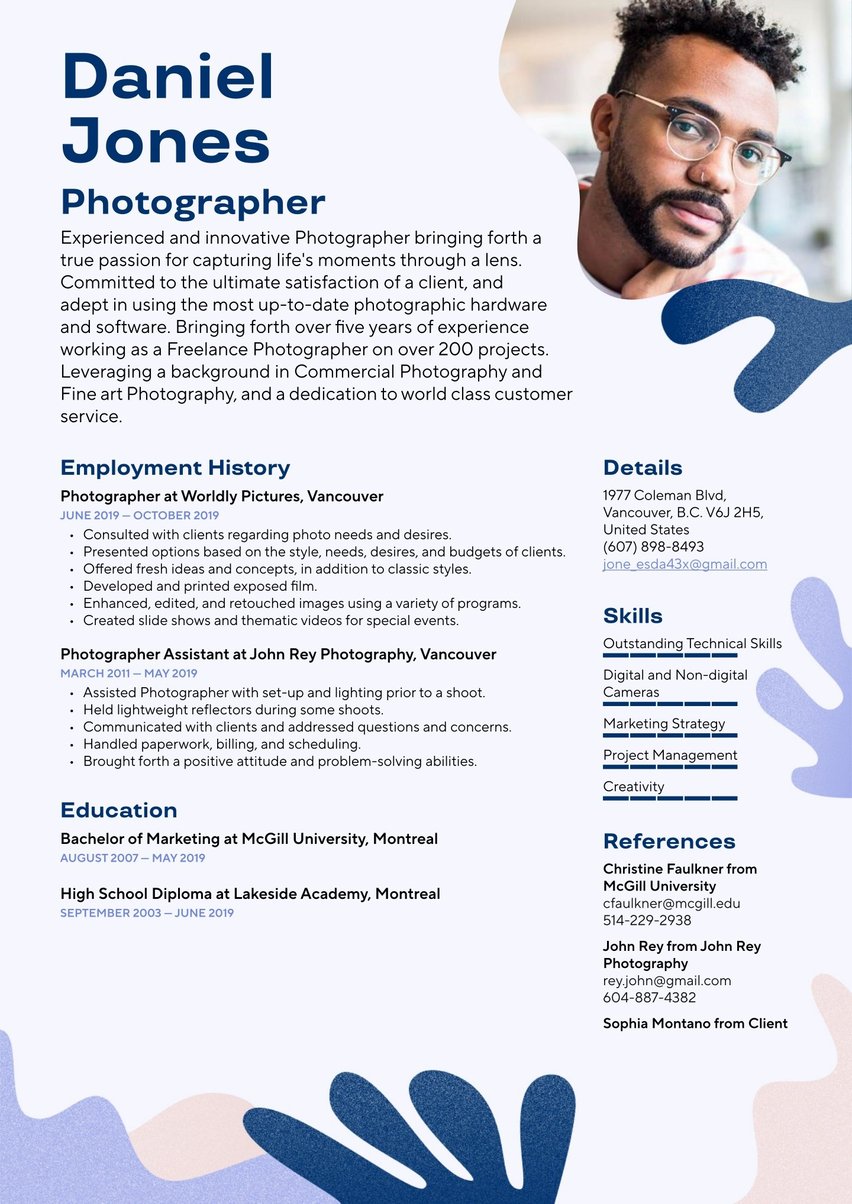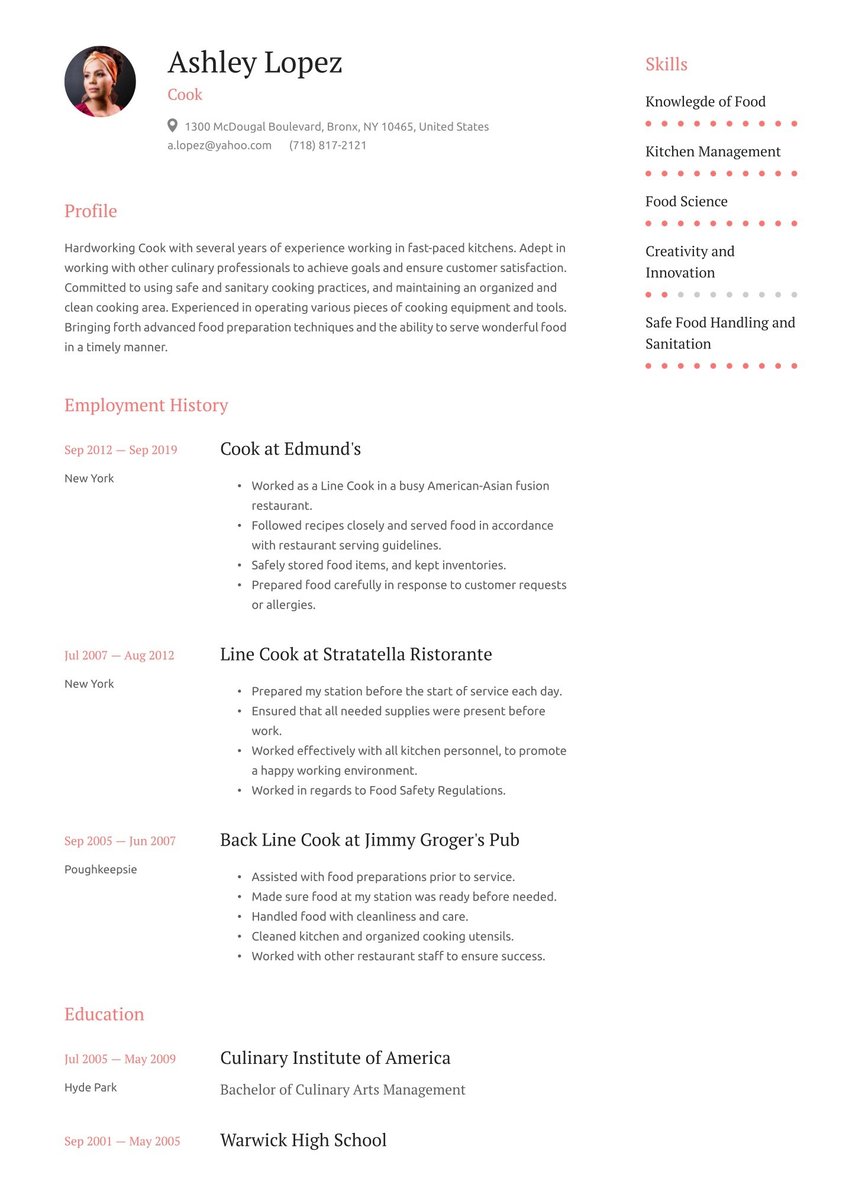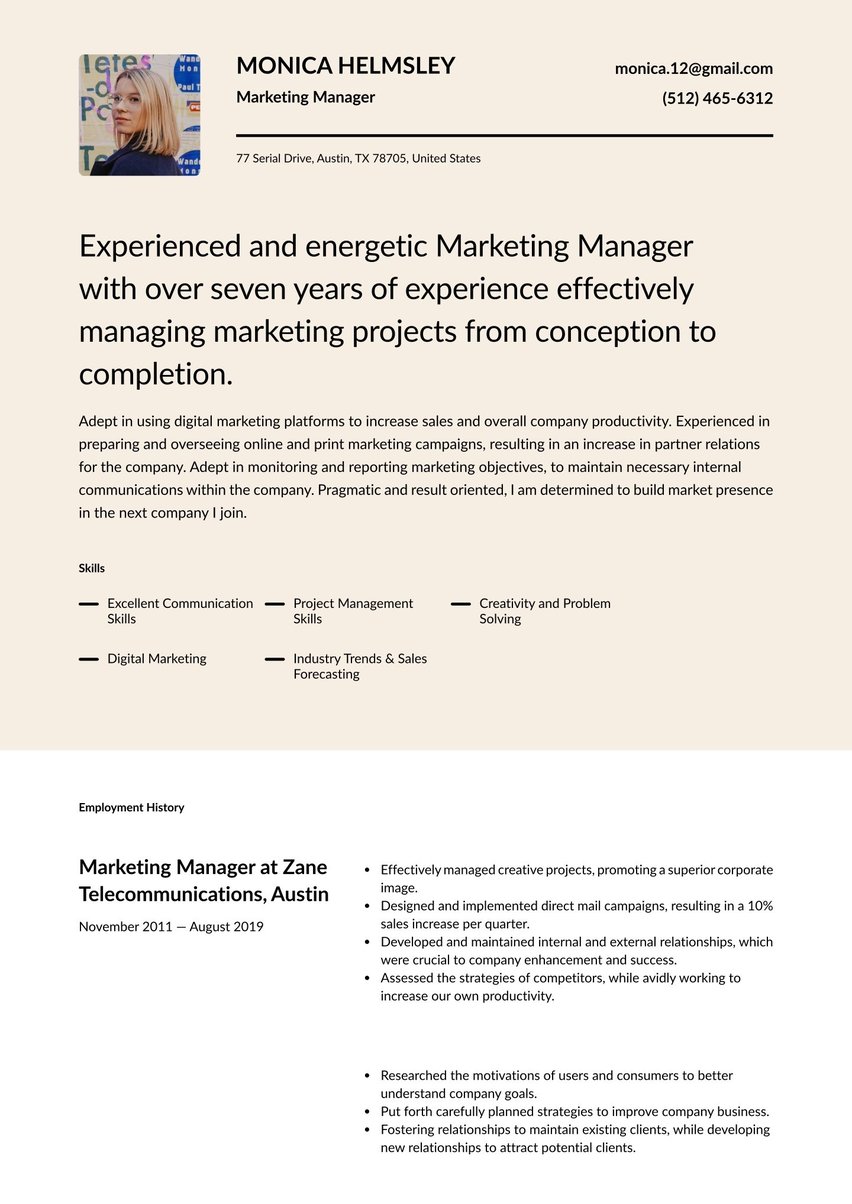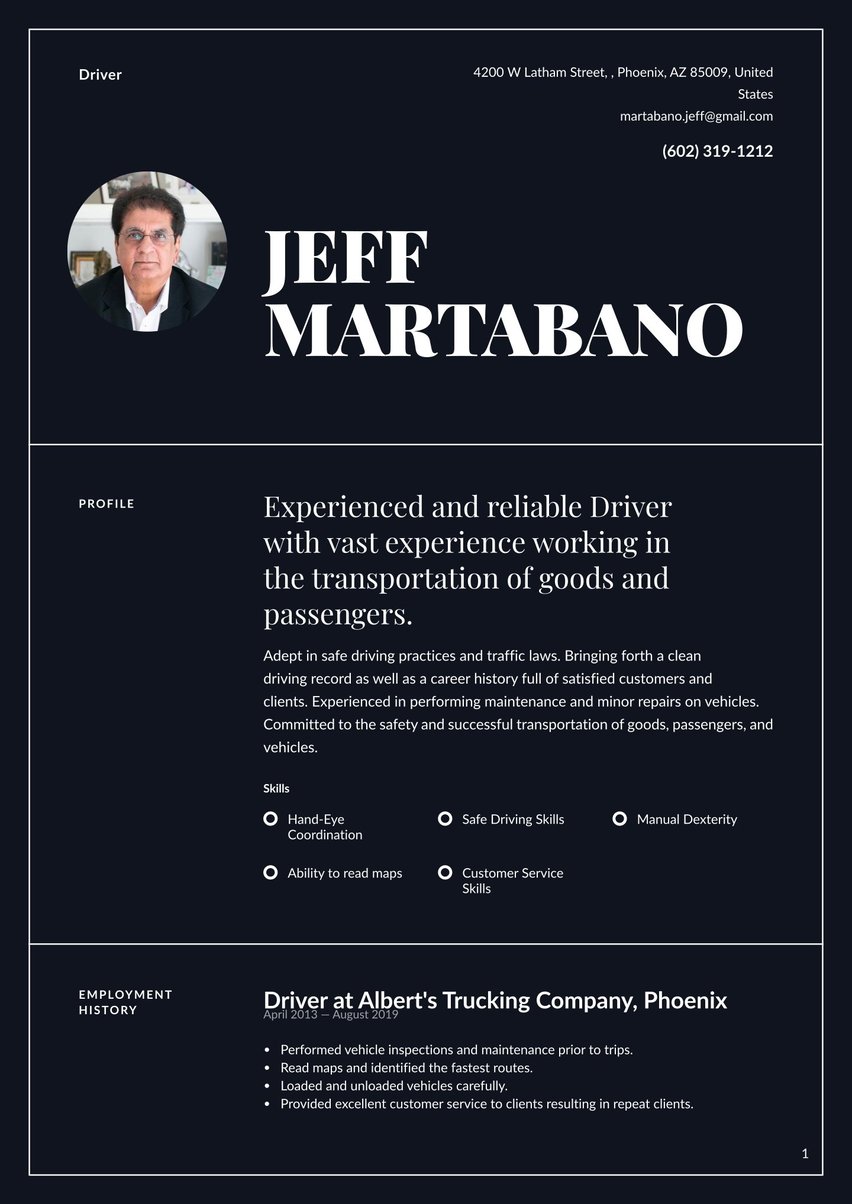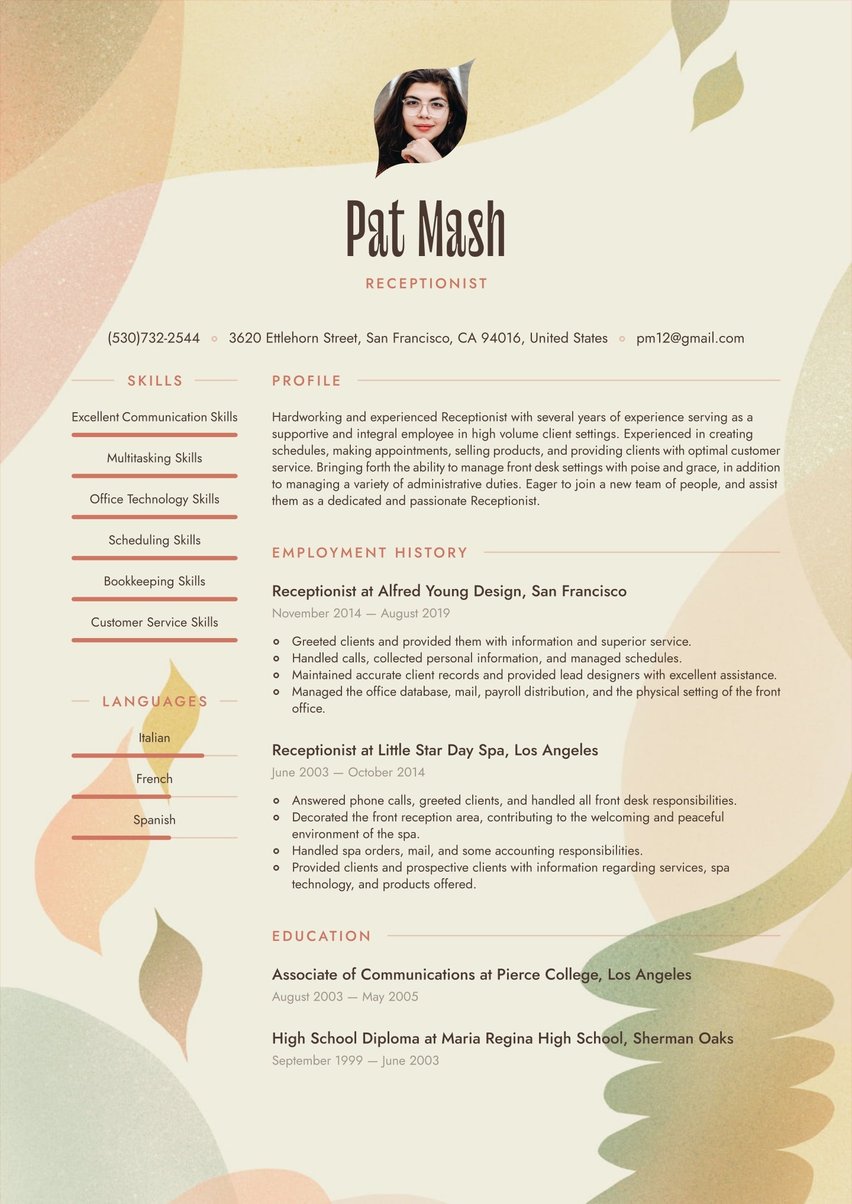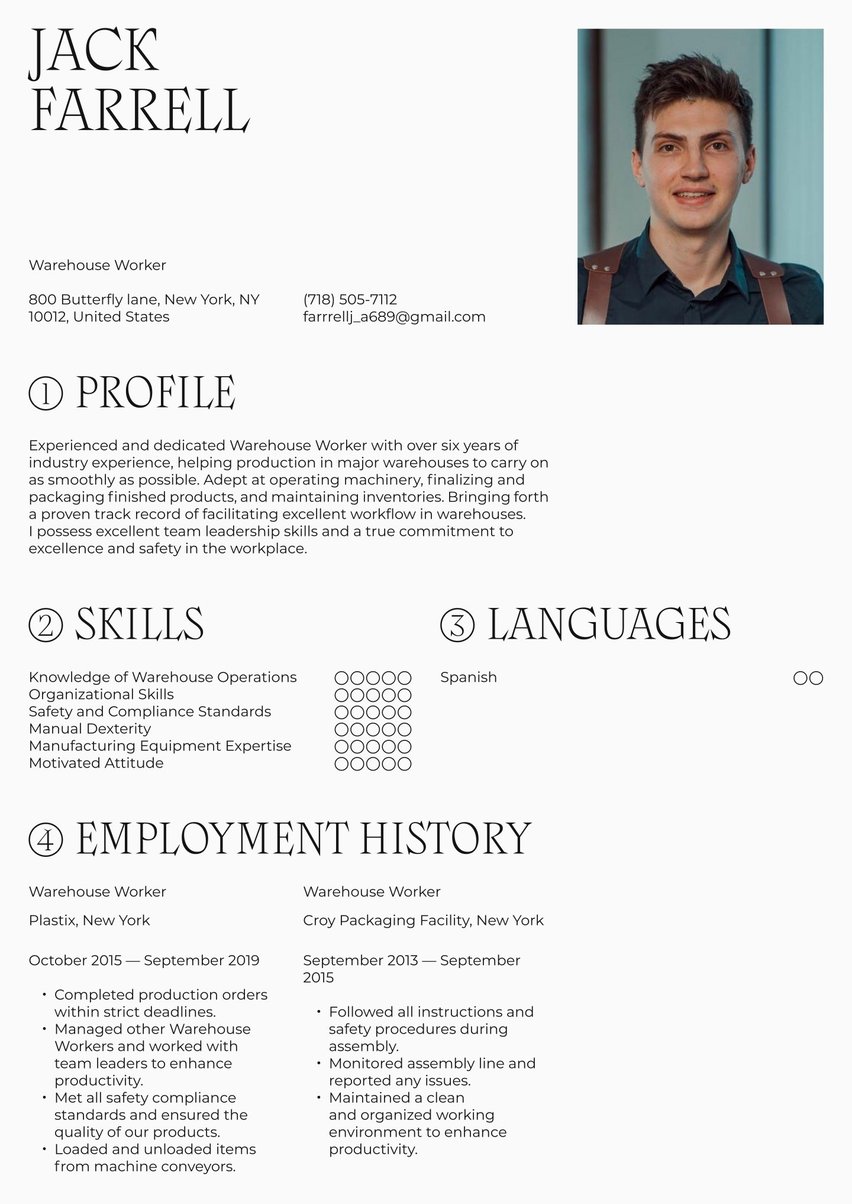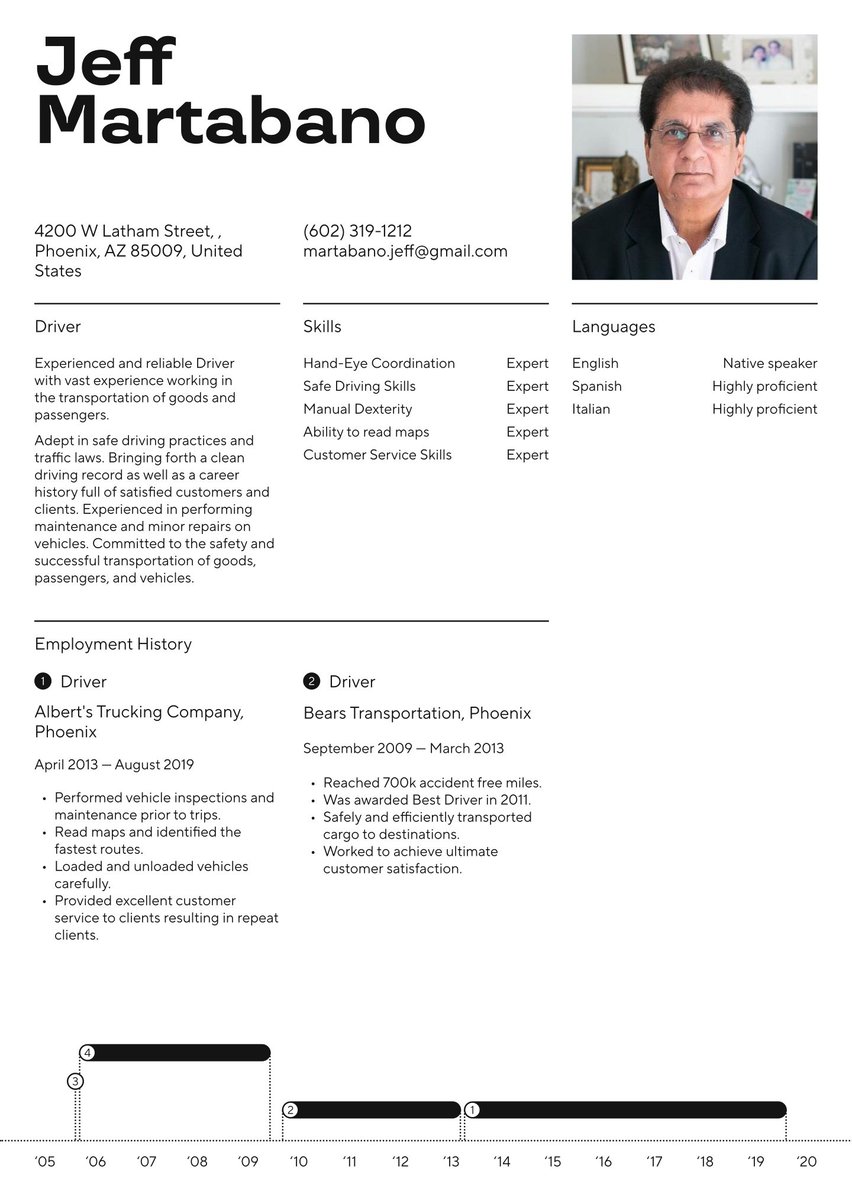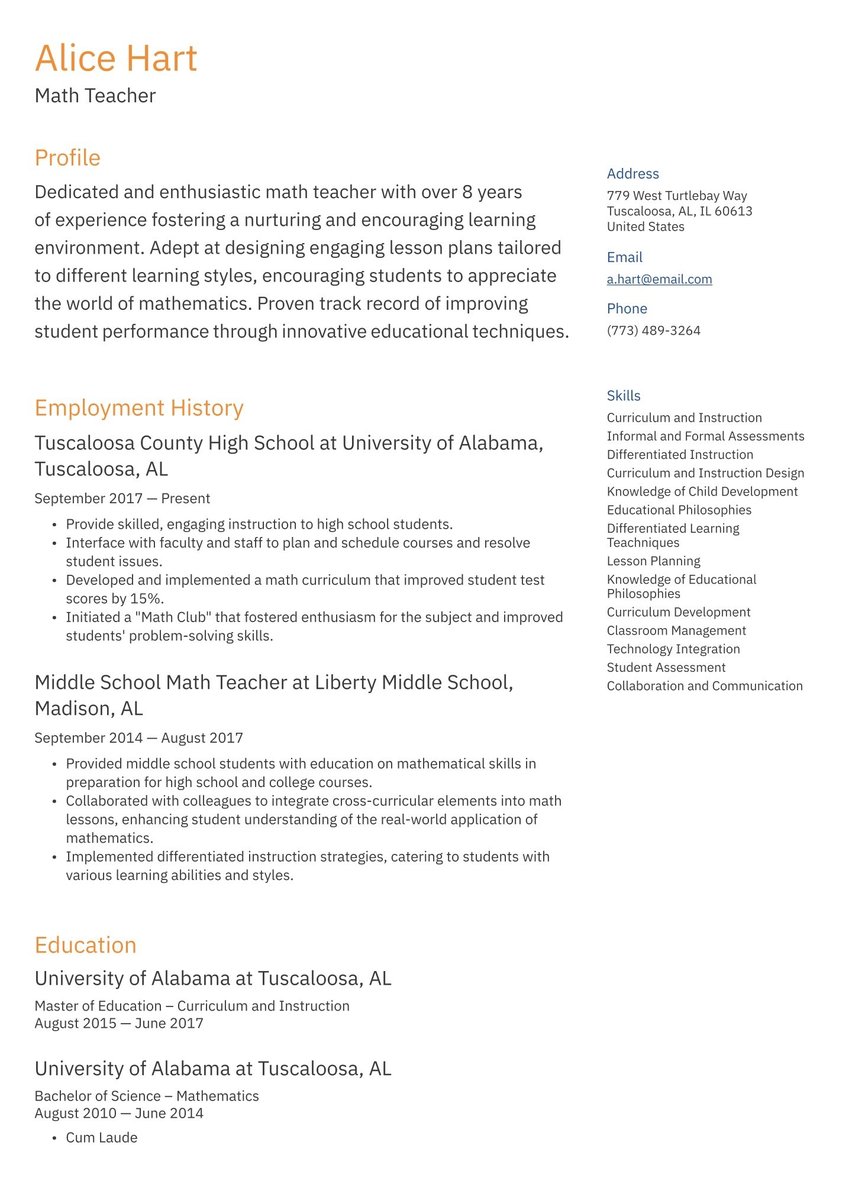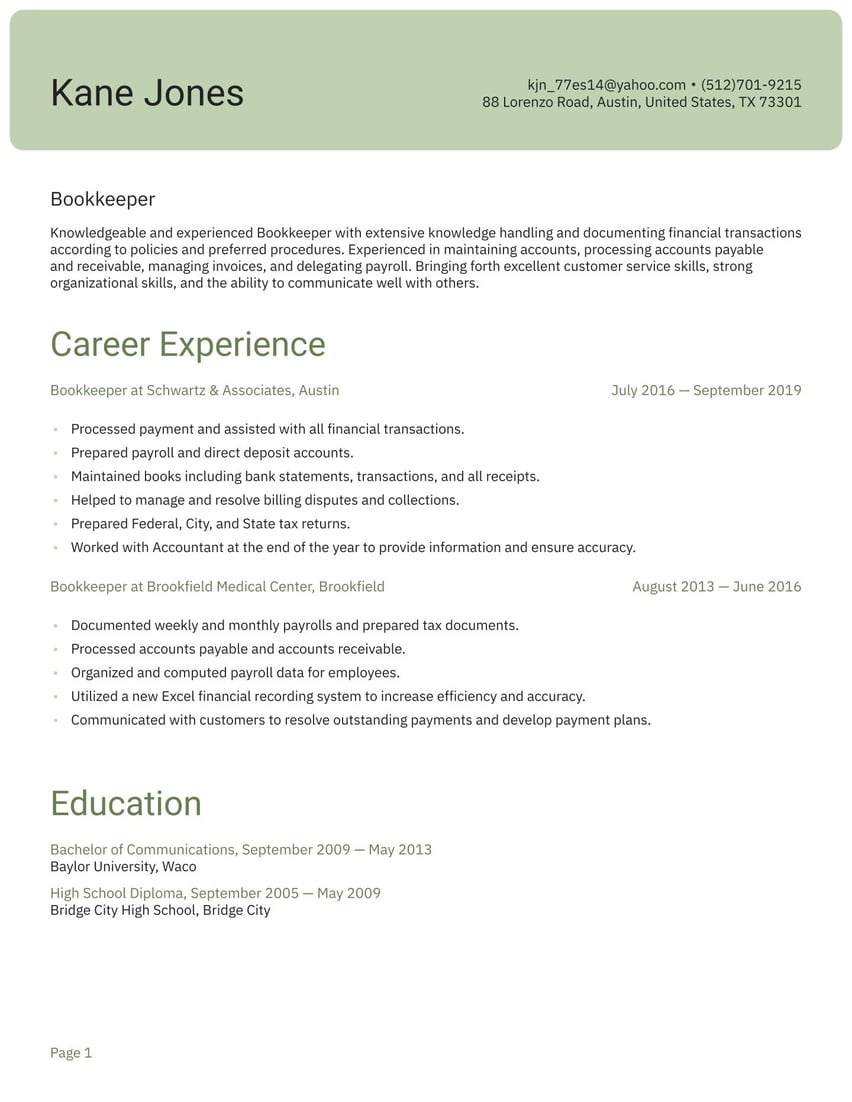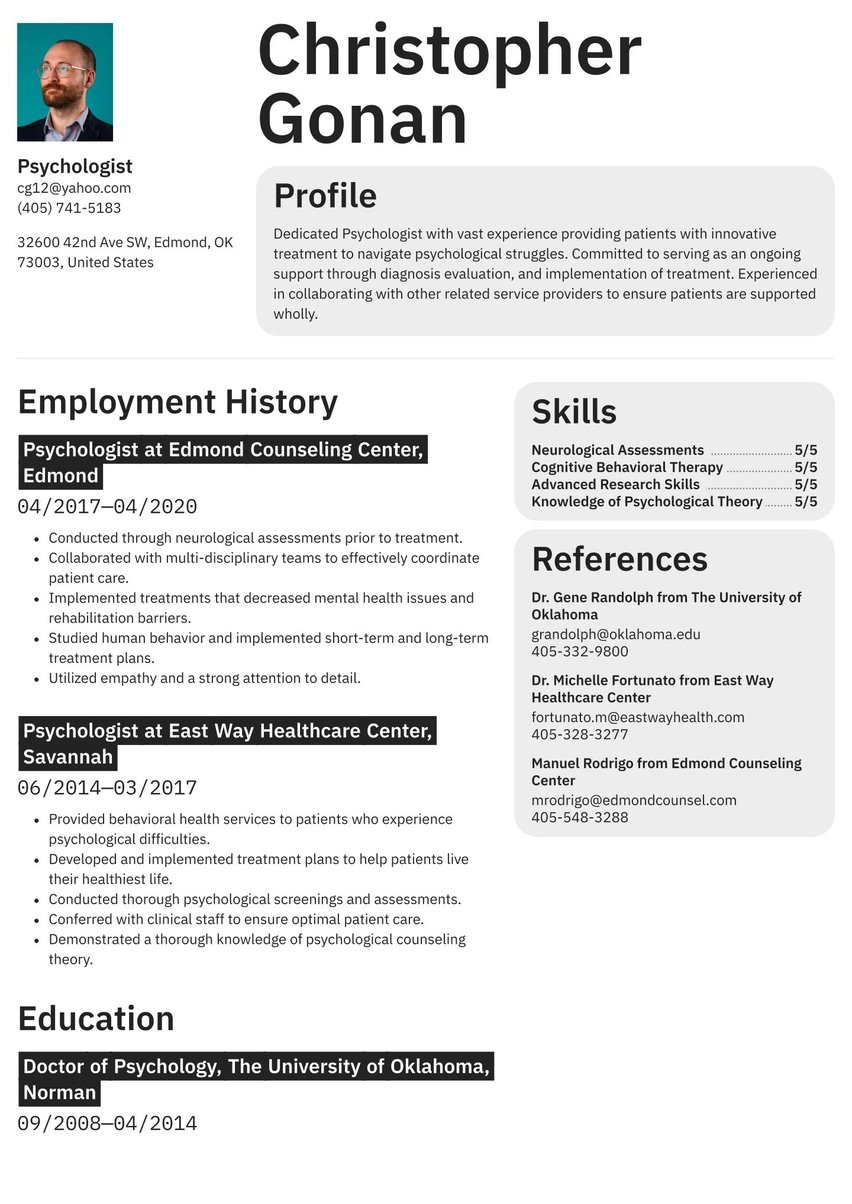Going solo as a freelancer in 2021 can be exciting and terrifying all at once. While you have the freedom to determine your own hours, rates and projects, you won’t have the safety net of a monthly paycheck to fall back on.
Freelancer resume examples by experience level
Whether you decided to go freelance because of the health crisis or you’ve been independent for a while now, there are certain things you need to keep in mind when writing a resume as a freelancer. Your resume might not look like those of your friends with full-time jobs and that’s OK. A resume for a freelancer should be flexible and easily adaptable to the different types of projects you apply for.
While this freelancer resume example and guide will cover general tips and guidelines for self-employed people, you can also find field-specific resources in our 125+ resume examples. Make sure to check out the one that most closely corresponds to your job title in order to tailor your resume even further.
In this guide, along with our freelancer resume example, we’ll show you how to:
- Decide which resume format is best for your freelance experience
- Write each of the essential sections for a great resume sample
- Create a professional layout and design that commands attention
- Avoid common mistakes that plague many freelancers’ resume samples
More than two million Americans began freelancing in the past 12 months and it looks like the trend towards independence is here to stay: according to a study by Upwork, more than half of all post-COVID freelancers say they wouldn’t return to traditional employment, not even for top dollar.
What does a freelancer do?
“Freelancer” is a general term that refers to many different professionals who work for themselves instead of a traditional employer. Freelancers may have short or long-term contracts but they are not considered employees of a company and are generally free to choose the type of projects they’d like to work on.
Some people freelance on nights and weekends while still keeping full or part-time employment. Freelancing can be a great source of supplemental income, and can sometimes even be more lucrative than a steady job.
Freelancers work in a variety of fields, but are often associated with media and other creative professions including:
- Graphic design
- Journalism
- Marketing and public relations
- Content creation
- Translation
- Writing
- Music and composition
- Translation
- Film editing
- Web development
- Consulting
- Wedding photography
- Landscaping
- Tourism i.e Guided tours
- Audio recording
Statistical Insight: According to Flexjobs, a jobs board for remote work, the top fields for freelance employment are:
- Computer & IT
- Accounting & Finance
- Administrative
- Project Management
- Customer Service
- Medical & Health
- Writing & Editing
- Education & Training
- Marketing
- HR & Recruiting
How to write a freelancer resume
A resume for a freelancer will still include many of the basic sections found on traditional resumes including:
- The resume header
- The resume summary (aka profile or personal statement)
- The employment history section
- The resume skills section
- The education section
While a traditional resume might not offer much flexibility, as a freelancer, you are able to add, remove and rearrange sections as you see fit and according to the best practices of your industry. You can also switch around these sections based on the type of job you are applying to.
There are a few basic situations in which you might need to create a freelance resume:
- You are a freelancer applying for new freelance work
- You are a full-time employee looking to break into freelancing
- You are a freelancer looking to transition into a traditional full time job
Each of these situations will change your approach to writing your freelance resume. The first two situations will require a resume that focuses heavily on your skills. If you are looking to break into freelancing, you can also mention your previous employment in your summary section.
The third situation will require a resume that’s a bit more in line with what hiring managers are looking for in traditional candidates. You’ll want to focus heavily on work history and organize your freelance experience to show what you can bring to this new company.
Facing the ATS
When applying to traditional jobs via online application portals, you’ll want to keep in mind the presence of pesky resume scanners called Applicant Tracking Systems (ATS). These algorithms scan your resume sample for keywords and send only the top ranking applicants to be reviewed by the hiring manager. Here are our top tips to get past this obstacle:
- Read the job description closely and look for “keywords” – skills and duties emphasized by the employer
- Insert the keywords using the exact language from the job description.
- Use common heading titles like “Education” or “Skills” so that the ATS can find the information it’s looking for.
Choosing the best resume format for freelancers
Many people who are traditionally employed only know of the reverse chronological resume format. While useful for organizing work history, this is not always the best format for freelancers. Let’s explore your options.
The reverse chronological format is characterized by an employment history section that takes up the bulk of the page. Previous positions are listed from most recent to oldest (hence the name reverse chronological) along with the employer, dates worked and location. Underneath each job title are bullet points with your responsibilities and achievements.
If you have considerable long-term contracts with one company, even as a freelancer, then reverse chronological might still be the best choice for you. However, many freelancers who complete multiple projects in a month would never have the space to list them all out in this format.
In this case, you might want to choose a functional format. This format begins with a skills section that explains the type of work you do and your specialities. You can then create an experience section that lists duties and achievements for different types of projects without necessarily attributing them to an employer.
If you find yourself needing elements of a functional resume and a reverse chronological one, then a combination format is the right choice for you. This structure begins with a skills section and is followed by a shorter employment history section that still allows you to mention any impressive companies you’ve worked for.
Resume summary example
At the top of your resume sample, you may choose to include a summary. This section is particularly useful for freelancers because it allows you to speak directly to the employer and explain your situation. A hiring manager won’t be left wondering why your resume doesn’t look like others once they see that most of your career has been freelance.
In just 3-5 sentences, the summary should offer a taste of everything you have to offer. Mention your job title, your number of years of experience and your biggest achievements. If education is important in your field, you can also note any relevant degrees here. As a freelancer, it’s important that you define who you are and what you do – and the summary is the place to do just that.
Check out the summary from our freelancer resume sample for an idea of how to structure your own:
Dynamic Freelancer specializing in content creation, journalism, entertainment writing, and social media management. Adept in creating engaging, stimulating, and data-driven content that relays powerful messages to targeted audiences.
Employment history sample
If you’re creating a reverse chronological or combination resume format, you’ll still want an employment history sample that covers all the bases. This section is especially important when transitioning from freelancing back into full-time employment.
List your relevant positions beginning with your most recent and working backwards until you’ve filled the page (no need to go further back than ten years). Make sure to include the employer or client name, dates worked and location if relevant.
In the bullet points under each job title, quantify your experience using numbers, facts and concrete information wherever possible. This will help your resume sample stand out to a hiring manager and will demonstrate what you can bring to their company.
Our freelancer resume example offers more insight into this section:
Editorial Content Manager , J&R Media, New York
August 2018 - July 2021
- Served as a Content Manager for this digital communication platform specializing in entertainment news.
- Researched interesting stories and conducted interviews with persons of interest.
- Oversaw the production of still photography and its layout.
- Effectively coordinated team members and assignments to achieve goals.
- Maintained an editorial calendar and oversaw the execution of content across internal and external channels.
Freelance Writer, Lower East News, New York
July 2015 - May 2018
- Wrote over 200 blog articles for this high-traffic news platform.
- Helped to achieve the goal of 200k readers per month.
- Performed in-depth research and content development prior to delivering articles.
- Collaborated with other writers, and mentored new writers in content writing best practices.
Convey energy and mastery of your field by using action verbs when describing your duties and skills. Here are some examples:
- Administered
- Built
- Charted
- Created
- Designed
- Developed
- Devised
- Founded
- Engineered
- Formulated
- Implemented
- Incorporated
- Initiated
CV skills example
As a freelancer, your skills are the value you sell à la carte so naturally, this section is one of the most important on your CV. You may choose to create a bullet point list as is found on many resumes, or you may want to expand this section with descriptions for each skill.
The skills section can be a great place to include knowledge of software, specialized techniques or other technical abilities that clients and hiring managers want to see right away. This is also the moment to add any foreign languages to your resume along with your competency level.
Here is the skills section from our freelancer resume sample:
- Motivated Attitude
- Content Writing
- Journalism
- Content Research & Development
- Advanced Communication Skills
- Ability to Work Independently
Freelancer resume education example
The education section on your freelancer resume generally varies in importance based on your job title. For example, a freelance programmer may be expected to hold a degree in computer science while a photographer’s portfolio is much more weighty than their educational background.
In any case, you can list the degrees and certifications you hold starting with the most recent first. Include the name of the degree, the school, location and dates attended. If you are completing your degree now, make sure to include an expected graduation date.
This section is also the moment to list any professional memberships or organizations you are associated with.
Check out the education example from our freelancer resume example:
Bachelor of Science in Media, Culture, and Communication, New York University, New York
September 2011 - May 2015
High School Diploma, The Loyola School, New York
September 2007 - May 2011
Resume layout and design
As a freelancer, clients are counting on your professionalism. That’s why the layout and design of your resume are of the utmost importance. You want to show a potential employer that you can deliver the results they’re expecting. A great layout, especially in creative fields, is one of the first indicators that you do a great job.
No matter how much (or little!) experience you have, your resume should be highly readable. That means a great balance of white space to text, an attractive header and only one or two font styles used throughout. If you work in design, then creating a resume layout from scratch won’t be a challenge. Otherwise, you may want to consider a professional resume template to help make the job easier. Check out our freelancer resume example for ideas on how to create a strong design.
- Keep your resume to a maximum length of one page
- Add a touch of color to make your header stand out
- Adjust your layout based on the application and employer tone
- Stuff the page with too much information
- Deviate from the standard section titles
- Submit a resume without proofreading first
Key takeaways for a freelancer resume
- There is no one-size-fits-all when it comes to a freelancer resume – create the document that works best for your needs and experience!
- Carefully consider your formatting options as freelancers are likely to find a functional or combination resume format more useful than a reverse chronological one.
- Take a moment to think about the purpose of your resume and let that dictate how you choose to order the sections.
- Don’t forget to create an attractive header that contains your name and contact information so clients can easily get in touch.
- A great visual presentation can quickly sell you as a professional so put great design first and foremost.


.jpg)

.jpg)
